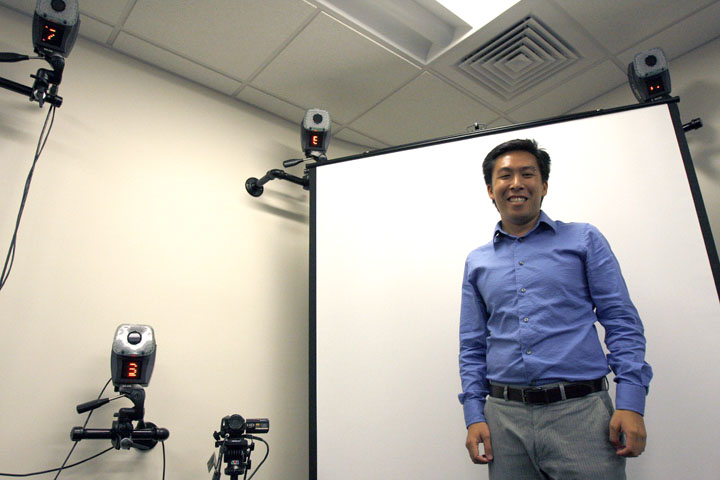 Bryan Koci / Staff Photographer
Bryan Koci / Staff PhotographerTo some, the ability to communicate seems like a right, while expression through speech is thought of as second nature like breathing, eating and drinking. However, for individuals who suffer from speech disabilities, communication is the biggest privilege of all 8212; and the farthest thing from an absolute.
For Dr. Ignatius Nip of San Diego State’s speech, language and hearing sciences program, finding an efficient way to detect problems in speech development at an early stage is not only a job, but a way to make a difference.
“I realized there was a lot more that we needed to know in order to improve how well they (people suffering from irregular speech development) are understood by other people,” Nip said.
Trained as a speech pathologist, Nip, a Vancouver native, elected to travel from the frigid University of Nebraska-Lincoln to the warmer climates of SDSU in the beginning of last year. As the director of the Speech Physiology Laboratory, at a school that boasts the ranking of the No.1 small research school in the country, Nip has been able to conduct research on speech motor performance, and its development, specifically in children.
At his dispense, Nip uses an eight-camera motion camera system to measure 15 various markers placed on an individual’s face to capture where the dots are during speech 8212; a system that can only be found at a handful of campuses throughout the country. With this information, Nip and his team hope to have the ability to compare regular speech patterns and development to those with irregular tendencies.
“I am hoping that with this research we can obtain more information on what happens during typical speech development, and hopefully find intervention for kids who do not fit these patterns,” Nip said.
Now entering his second fall semester as an assistant professor at SDSU, Nip still believes research and teaching future speech pathologists hold an equal value.
“The great thing about this field is that it’s where biology, biomechanics, physics and psychology all mix,” Nip said. “I tell my students that they have chosen a good field. It is rewarding to be able to really help someone with a communication disorder, to help them with family, friends and spouses.”
Besides using a highly sophisticated camera system to illustrate speech development, Nip has focused most of his attention on new research pertaining to children suffering from cerebral palsy, a neurological condition that affects motor development.
“Once we get data from this study we can get grants and do big things with some new information that will lead to early intervention,” Nip said.
For those with an incapability to express their emotions effectively through speech, Professor Nip works diligently to implement new ways of detecting problems early. His work, both inside the laboratory and the classroom, is a testament to his commitment to the field of speech pathology, and more importantly, to the goal of giving the greatest gift of all: Speech.






